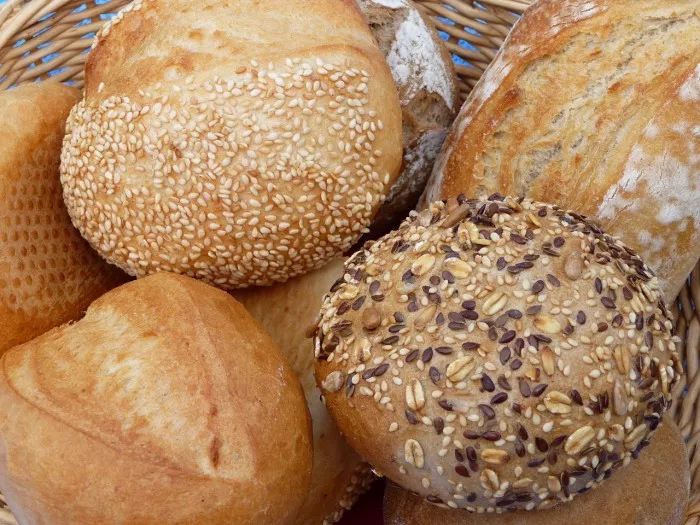There is a proverb in English, "bread is the staff of life" However, in recent years, bread, a simple staple food, has a "bad reputation", mainly from those who advocate a low carbohydrate or gluten free diet However, giving up bread at dinner can be a difficult prospect because almost every country and culture on earth has added some type of bread to their food.

Traveling around the world, you may find that various forms of bread accompany or become an internal part of your diet, which should be tasted as part of the cultural background and the delicacy of cooking experience. Here are some facts about bread that show how important it is to our experience as humans and the evolution of cooking.
Bread in history
Historians trace the production of bread back to early human history about 14000 years ago. Initially, it may be a random experiment on naturally growing cereal plants, which later became an important part of the development of human culture. People can build permanent communities and rely on different types of food to survive, rather than constantly following the migrating fauna to eat meat. Making bread does not depend on the existence and location of animals. In case of unsuccessful hunting, it can be saved for a longer time to support survival. Seeing this value, mankind began to consciously plant seeds for future harvest, which began the practice of agriculture.
Various types of bread
Each region of the world developed its own bread type based on the grains available at that time and the most convenient cooking methods. Therefore, you can find bread made of wheat, rice, oats, corn, potatoes, barley, millet and nuts. But you can also use little-known Cereals, such as einkorn, quinoa and spelt. You can make bread by baking, frying or cooking. You can use endless cooking utensils and inventions like the oven to make bread. It is indeed one of the most common life sustaining foods you find around the world.
Bread of the ancient world
In the earliest times, there was a kind of flat bread even before humans began to deliberately cultivate plants that provided grain for bread. The evidence that they produced this kind of bread comes from Egypt, the Middle East and Iran. Ancient bread makers used open fire to cook a mixture of grain and water. Some bread is buried in sand, ashes and embers for baking.
Various types of ovens were gradually used, and the use of yeast to ferment bread dough was first developed in ancient Egypt. During the Roman Empire, baking a lot of bread for more people was very prominent at that time. Ancient Greece developed a "mill", which ground a large amount of grain into flour and used it to make bread. In the middle ages, bread became an industry, and there were designated guilds to make bread of various quality levels for all levels of society.
Bread of the new world
Native Americans used a variety of crops to make bread, including corn, beans and acorns. Some tribes developed ovens to make bread. Aztec and Inca cultures used local crops to produce their own bread types. Tortilla is a thin and flat pancake made of corn or flour, which is made and used in the same way as traditional Western bread. In South America, the seeds of the quinoa plant are used to make bread. As Europeans moved to the new world, they brought their familiar form of bread.
Versatility of bread
Throughout history, bread has provided a portable form of food that can be carried during hunting or travel to distant places, and when other food is scarce. It can be filled with meat, vegetables, fish and spices to make delicious dishes. It can be made into sandwiches, rolls, soup bowls and other items. Bread can also be made into all kinds of cakes, puddings and condiments. Bread is used for breakfast, lunch, dinner and dessert. It has always been a strange element and has launched a thousand cooking creations in a thousand different countries. It is worth pondering how it fell into today's shame of anti carbohydrate.
What makes bread "disreputable"?
In the past, bread was made from the simplest raw materials and was fresh every day, so it could be eaten in a relatively short time. Bread produced in today's factories may contain up to 20 ingredients or more, including trans fats, preservatives and fillers that do not provide any nutritional value. Therefore, they become carbohydrates, decompose rapidly in the blood and are easily converted into fat. They provide a quick filling effect and contribute to empty heat, causing people to get fat.
Giving up bread has become a standard requirement in today's diet, but this may lead to a rebound effect, that is, increasing snacks, which are more harmful to your health. However, the revival of bread has slowly taken place, providing new bread forms and configurations, healthier ingredients and a wide range of choices to meet specific dietary needs. You can find high protein bread, gluten free bread, low sugar bread, and many other types that suit your specifications.
Bread can still provide nutritional value, including B vitamins, protein, fiber, iron and calcium. However, in order to get the most nutrition from this ancient staple and avoid many carbohydrate related hazards, you should carefully read the label and make thoughtful choices from many choices. If you choose bread with the least ingredients, the least additives and preservatives and the highest nutritional value, they can still be a healthy and multi-purpose supplement to your diet.